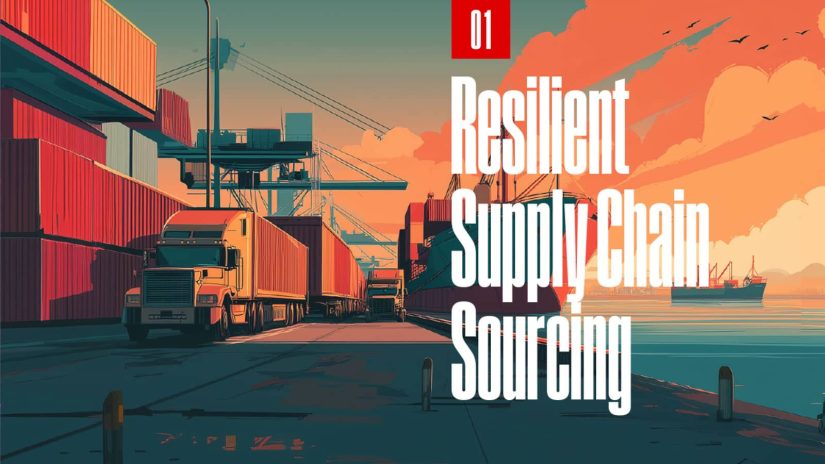
**The Significance of Financial Stability for Entrepreneurs as 2026 Approaches**
In recent times, entrepreneurs have experienced the swift transformations in market dynamics. Supply chains have faced disruptions, interest rates have escalated more rapidly than expected, digital adoption has fluctuated by industry, and companies that once considered their income secure found themselves in urgent need of cash flow. As 2026 approaches, achieving a competitive advantage is not solely about profitability or the speed of expansion but about cultivating financial stability—the ability to withstand shocks, adapt without distress, and maintain operations while others struggle. Visionary entrepreneurs do not wait for disturbances to reveal vulnerabilities; they forecast and prepare, prioritizing financial resilience as they head into 2026.
**Grasp the Risk Landscape**
The economic environment leading up to 2026 is characterized by higher borrowing expenses, evolving consumer patterns, and shorter, more erratic revenue cycles. Entrepreneurs can no longer rely on predictability, rendering financial flexibility a necessity. Today’s consumers demand immediate services in their everyday lives, and this expectation also influences financial services, shaping how trust in financial transactions is established. The real danger lies not only in downturns but in being unprepared for erratic cash flow challenges. Resilience begins with the recognition that volatility is the norm, not the rarity.
**Create Your Personal “Shock Absorber”**
While cash flow is the foundation of financial stability, true security requires more than just savings. Entrepreneurs need multiple tiers of protection, including cash reserves, readily available credit, and income sources that are diversified across customer bases and economic environments. Relying solely on a single source of revenue or retained earnings can be precarious during sales downturns. Diversifying income streams effectively safeguards against fluctuations. Rather than initiating new ventures, established businesses might adopt subscription models, create digital products, or cultivate retainer-based client relationships to cushion against seasonal shifts.
The structure of debt is another critical element that sets stable businesses apart from at-risk ones. It’s not the debt that is the problem but how it’s structured and its timing. Entrepreneurs should scrutinize their repayment timelines, interest vulnerabilities, and loan terms for situations where revenues may dip. Proactive measures like renegotiating or restructuring should take place ahead of time, not as a reaction to adversity. Financial resilience is built on having options, developed while circumstances are still advantageous.
**Enhance Your Decision-Making Framework**
While financial resources protect against immediate challenges, sound decision-making prevents future issues. Resilient entrepreneurs foresee instability and strategize by evaluating potential scenarios—such as a 20% revenue decline or maintaining expenses for several months without new sales. This foresight reduces the likelihood of panic-driven choices.
Financial acumen is vital for resilience; it encompasses more than simply receiving monthly financial statements—it necessitates the ability to interpret them, detect margin reductions, and quickly recognize changes in customer behavior. The capability to respond in real-time, instead of after the fact, can be crucial for a business’s survival.
Technological solutions like financial dashboards and cash-flow projections can offer insights more rapidly than conventional methods. Resilient entrepreneurs utilize systems to assess business health with sufficient time to implement changes before problems escalate.
**Pursue Resilient Growth, Not Reckless Expansion**
While growth is essential, pursuing it without safety measures can turn expansion into a risk. Entrepreneurs should focus on growth that does not overextend cash flow or commit them to rigid overheads. Purposeful funding for growth, instead of depleting surplus resources, guarantees flexibility during periods of revenue decline.
Assigning clear objectives to funds protects against the misallocation of emergency reserves for growth, preserving critical buffer zones. Sustainable growth prioritizes ongoing adaptation to shifting conditions rather than just speed.
**Connect With Your Future Self**
Financial resilience serves not only as a defensive mechanism but also as a strategy for freedom. Equipped with financial buffers and strategic debt management, entrepreneurs enjoy the liberty to refuse unsuitable clients, seize unique opportunities, control how they spend their time, and build businesses that support rather than dominate their lives.
By contemplating, “What will my future self appreciate that I am establishing today?” entrepreneurs align with aspirations of freedom, choice, and tranquility, making resilience the bedrock of the upcoming successful chapter.
